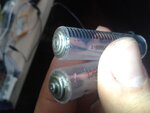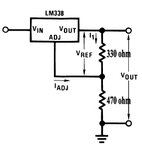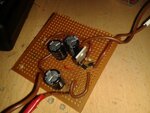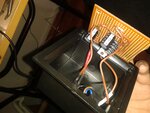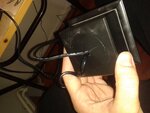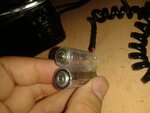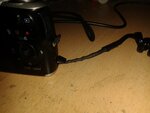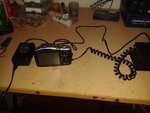jeolex
Member level 2
Dear friends,
I have Canon Powershot SX150IS Digital Camera which is run with two AA battery. I am an academician in Faculty of Agriculture. So I wanna observe to cotton leaf movement through different light directions. But my batteries are able to record video maximum a hour. I need 4-5 hours at least. So I try to make a main adapter.
I made a battery like structure for place it inside of battery slot. You can see below.
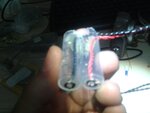
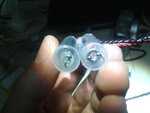
I made it from syringe, bell wire and rove which look like ring and placed on terminal of structure. I have also 5v 3A adapter and a 3.15V regulator circuit that I made it by LM338 max 5A regulator. Everything is ok about circuit. I got 3.15v output and also try it with battery like structure. The terminals of this structure gave me 3.15V. But only problem when I put it in battery slot and connect it via regulator, It has not opened yet.
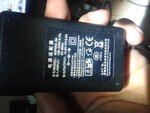
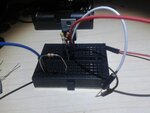
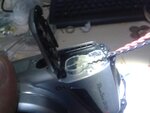
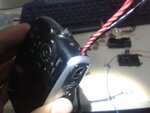
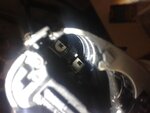
I tried to wiring 2 AA battery to battery like structre, but I couldn't open it. I have checked negative and positive terminals lot of time. So it shows that probably problem is related to terminal of structure. I need your helps, Is it possible that these roves which are ring like metal are not able to flow enough current for running of camera ?
I have Canon Powershot SX150IS Digital Camera which is run with two AA battery. I am an academician in Faculty of Agriculture. So I wanna observe to cotton leaf movement through different light directions. But my batteries are able to record video maximum a hour. I need 4-5 hours at least. So I try to make a main adapter.
I made a battery like structure for place it inside of battery slot. You can see below.


I made it from syringe, bell wire and rove which look like ring and placed on terminal of structure. I have also 5v 3A adapter and a 3.15V regulator circuit that I made it by LM338 max 5A regulator. Everything is ok about circuit. I got 3.15v output and also try it with battery like structure. The terminals of this structure gave me 3.15V. But only problem when I put it in battery slot and connect it via regulator, It has not opened yet.





I tried to wiring 2 AA battery to battery like structre, but I couldn't open it. I have checked negative and positive terminals lot of time. So it shows that probably problem is related to terminal of structure. I need your helps, Is it possible that these roves which are ring like metal are not able to flow enough current for running of camera ?
